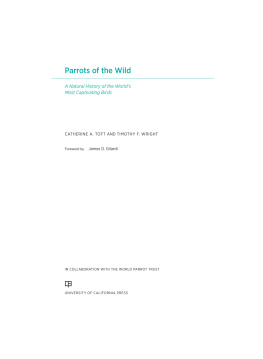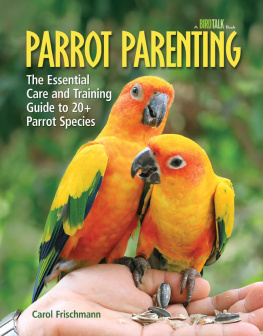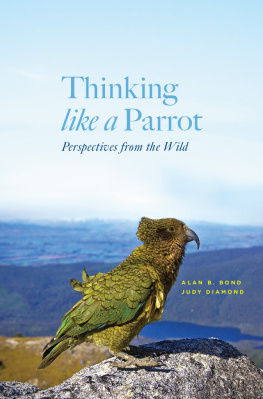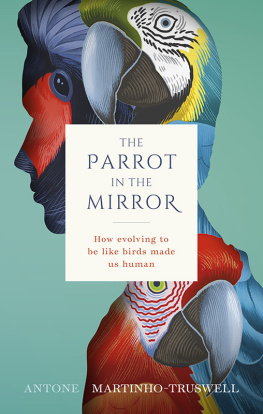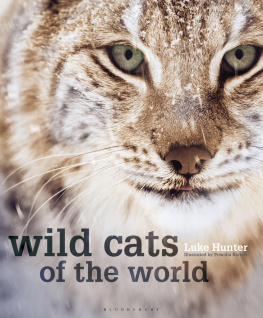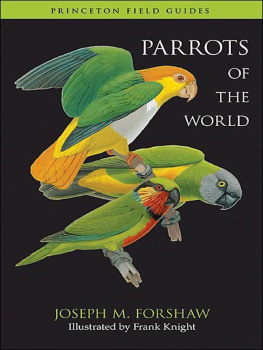FOREWORD
We are all familiar with orchids, the exquisite flowers that come in a bewildering variety of shapes and colors. It wasnt until I first climbed into the top of the Guatemalan forest for the first time, however, that I saw my first real, wild orchid. Only there, seeing them grow in the topical canopy along a limb festooned with bromeliads, vines, and other epiphytes, could I begin to understand where and how these plants really live, and why their unusual features evolved. It was also from this perch, high in the rainforest canopy, that I saw my first wild parrots. The birds were immediately familiar, just like the orchids, as Id grown up with pet parrots, but the lives of these wild birds differed from that of a caged bird in nearly every way imaginable.
It had never dawned on me that the parrots I raised as a kid were really wild animals that had made a massive transition from the tropical forest to life in a cage in Southern California. Yet here they were, very much the same creatures, flying rapidly through the forest, socializing in fluid flocks, and feeding on all sorts of seeds, fruits, and flowers. All day and night, these birds were using their highly evolved bodies and years of learning to survive and thrive in the tropical forest. They were making life-and-death decisions about partners, food, and predators, with no knowledge whatsoever of humankind, cages or aviaries.
Jumping forward twenty-five years, I now have the privilege of directing an international organization devoted to all parrots, with aims to save rare parrots in the wild and to help ensure that the millions of parrots living with humans receive the best possible care. At the World Parrot Trust, we are forever with a foot in each camp. We use our understanding of wild parrots both to help save them from extinction and to help inform our best practices in captive bird care. On the flip side, living with parrots in and around our homes gives us an intimate window into their lives and needs, and often inspires questions to explore in their wild brethren.
A great deal of our work at the Trust involves applying what we know about the biology of wild parrots to understand and eliminate the threats that endanger so many wild species. This knowledge helps us rehabilitate and release thousands of parrots caught up in the illegal trade, and it also guides every decision we make about the long-term care of birds in captivity. Beyond just knowing how to feed and house them, this knowledge helps us interpret their behavior, to know how and when to provide them with social partners, how to ensure that they get plenty of exercise and stimulation, and how to recognize serious problems with their health and welfare. Until the 1980s, shockingly little was known about wild parrots, which meant that much of this work on their conservation and welfare had to be based on a little bit of knowledge and a healthy dose of guesswork.
Happily, all this has changed; we now know vastly more about the biology of parrots than we did at that time. Over the past three decades, the number of published scientific papers on parrot biology has grown rapidly, exponentially in fact. We can no longer make statements like almost nothing is known about wild parrots, because this is simply no longer the case. Whether youre a parrot lover who just wants to understand what makes your favorite bird tick (or squawk), a college student hoping to understand a large and diverse group of birds, or a professor of biology studying and publishing cutting-edge science on parrots, new discoveries about these complex creatures are coming at us too fast for all but the most dedicated to keep up.
As it turns out, Dr. Catherine A. Toft wore all these hats, and she spent much of the last decade pulling together, reading, and digesting just about everything currently known about the biology of parrots. Initially she was motivated to do so through her own wide-ranging scientific studies of parrotsincluding publications on their genetics, phylogeny, diet, and conservation biologybut she also noted a pressing need to assemble and synthesize this growing body of knowledge. So, starting over a decade ago, Cathy began writing a comprehensive book on the biology of parrots, a project that eventually developed into the volume now in your hands. Sadly, she was diagnosed with nonsmoker lung cancer in the summer of 2011, just as the first draft of this book was delivered to the editors at University of California Press. It proved to be an aggressive cancer, and on December 2, 2011, she passed away, at just 61 years of age. The bittersweet task of producing the final version of the book was taken up by Cathys long-time collaborator, Tim Wright.
Naturally, such a parrot book could have evolved in any of several different directionsa purely scientific endeavor targeting an academic audience, a coffee-table book focusing on their stunning beauty and impressive diversity, or a popular treatment with an aim to entertain and enlighten some of the millions of parrot enthusiasts around the world. What Cathy attempted and what she and Tim together have achieved is all of these and more.
Whether the reader turns to a specific topic of interest, or starts from the beginning and systematically devours the book chapter by chapter, all will quickly learn just how complex and intriguing parrots are by nature. And by artfully walking us through such a wide range of subjects, Cathy and Tims decades of teaching shine through to enlighten us about how interconnected so many of their traits arehow, for example, the fact that they talk relates to their breeding and social systems, which relate to their cognitive function, which relates to their longevity, and so forth. Even the most common speciesbirds like budgies and cockatiels which many of us overlook as no more than a small bird in a cageare themselves remarkably complex, and in fact many of the most intriguing findings come from studies of such familiar species.

